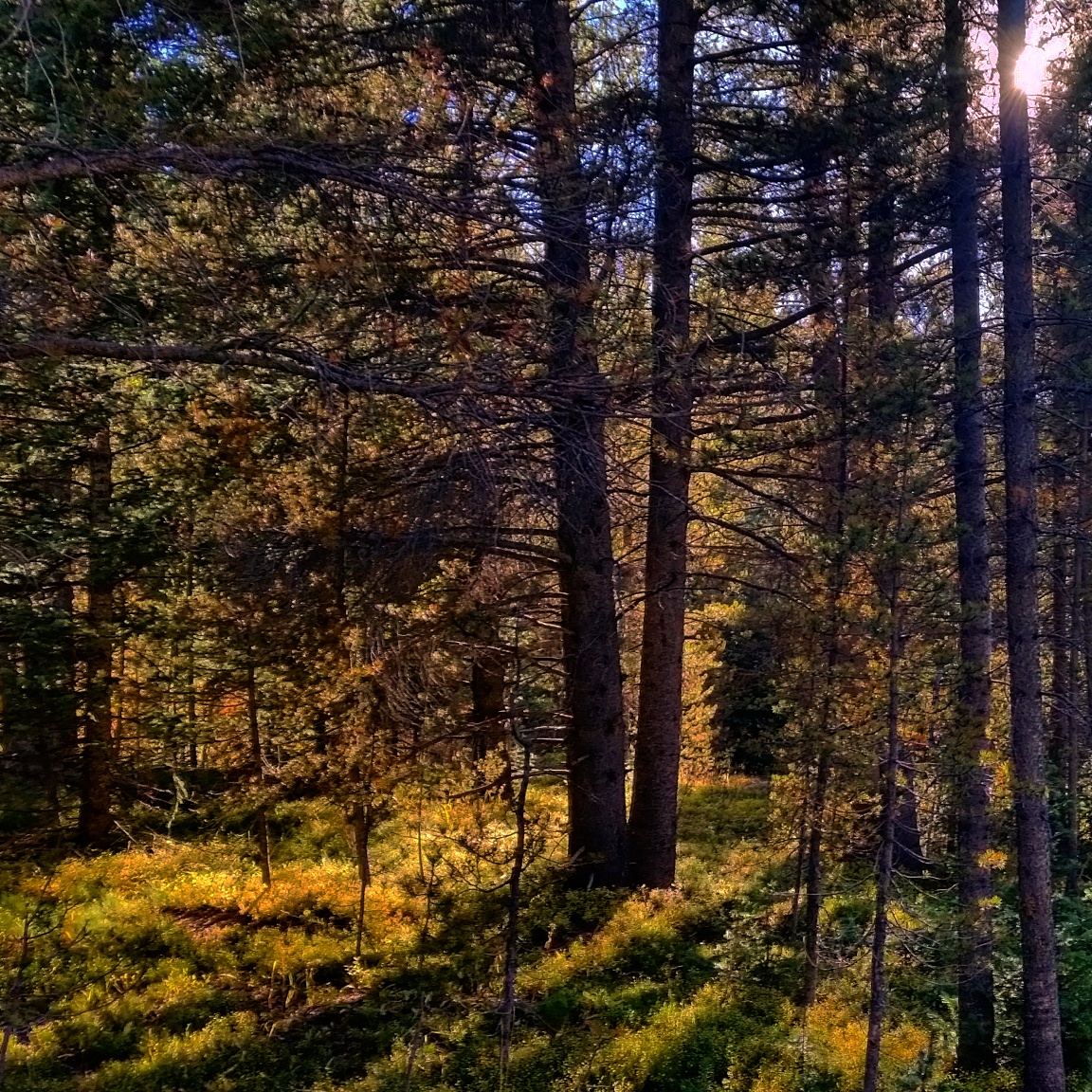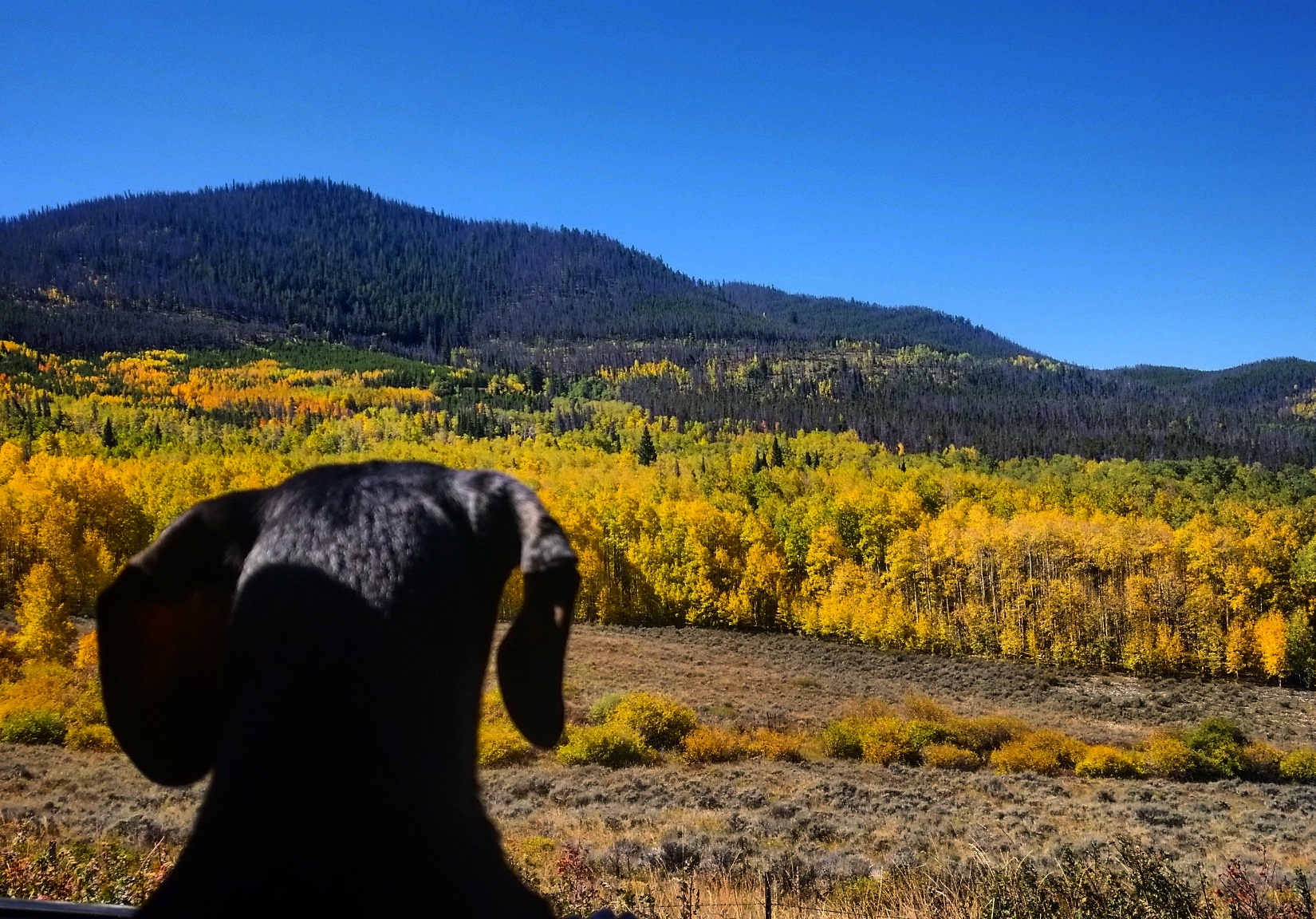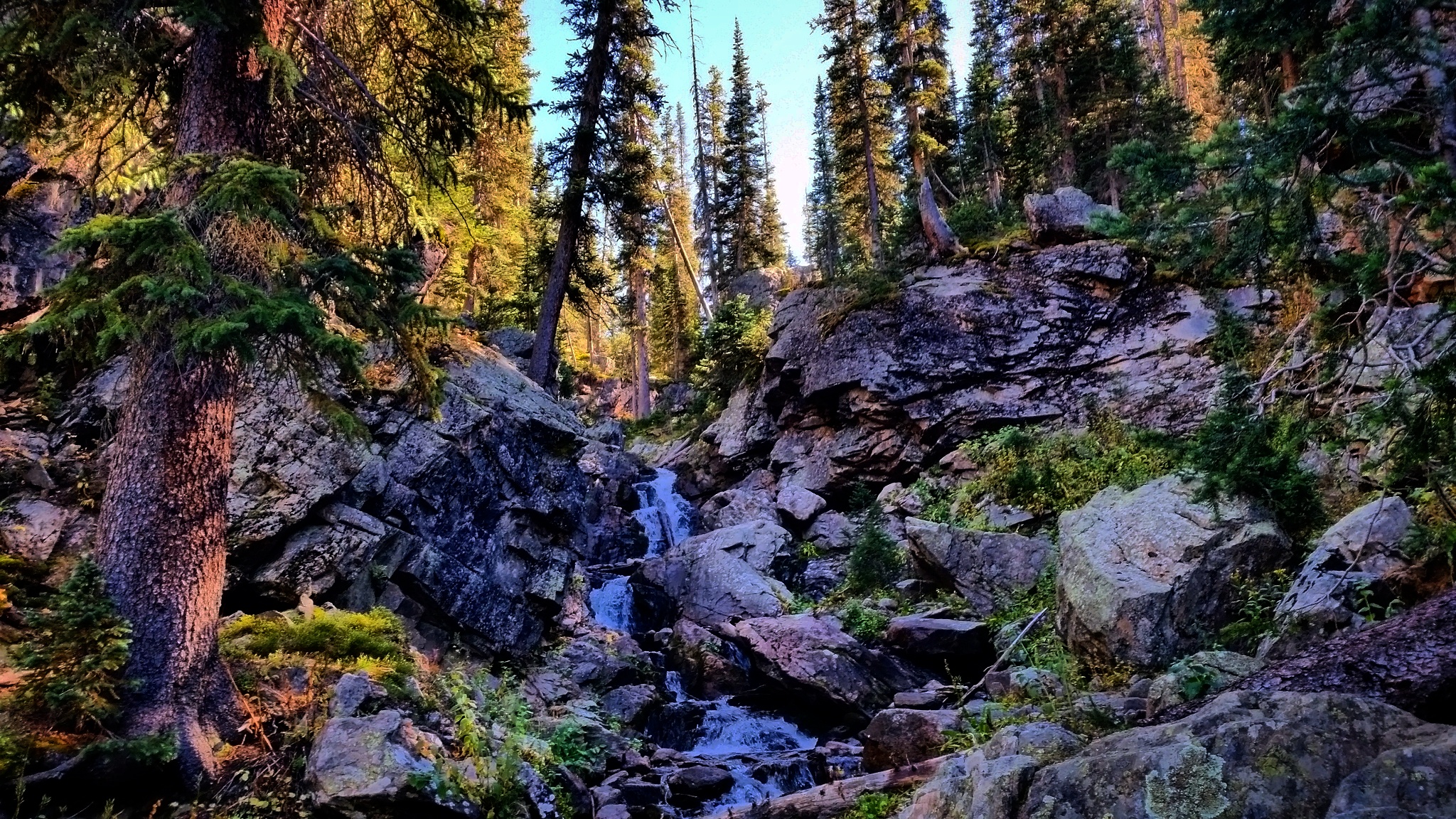I’m working on the newsletter today, which is quite a bit late because this past month has been a bit of a whirlwind, which included a move to Colorado. We didn’t have internet for our first two weeks out here so I was a bit disconnected from the interwebs, only having access via my phone. I have to admit, it was nice. It reminded me that we all benefit from being disconnected from digital for a bit so we can truly experience the world around us, the world that doesn’t come to us via a screen.
I’m not saying screens are bad, I’m just saying we need time away from them, too.
One of the awesome things I came across on my screen today was TimberNook, a “nature-based developmental program designed to foster creativity, imagination, and independent play in the great outdoors”, which was founded by a pediatric occupational therapist. How awesome is that! And something that speaks to the very depths of my soul. While TimberNook is for kids, I would love to see something similar for adults. Why, you may ask? Well, I’ll tell you.
My love affair with Colorado
I have been drawn to Colorado my whole life, first hearing stories of it from my Mom when she would talk about a trip her and her friend Peanut took out here with their dads when they were in high school. I get my love of the outdoors from my mom. She first took me camping in Michigan, where I grew up, when I was still in diapers and every year thereafter. She always showed me how beautiful the great outdoors was and taught me through her example to appreciate the environment and natural world around us.
I love having grown up in Michigan but I always loved my mom’s Colorado story and how much she treasured her time here. As an adult I’ve traveled to or through Colorado a number of times, loving it a bit more, and being more loathe to leave, each time I was here. I’d road tripped through the state twice and around the state once before coming out for 3 months last year with my husband.
Pain Changing
That trip changed my pain and changed my life. Up until that point, I had been having a really hard time with my chronic pain issues. I had been in pain since my initial injury back in January 2010, which was only partially alleviated by surgery in March 2011. While the most debilitating, visceral pain was relieved, I still had constant, ongoing pain in my right SI joint, low back, and hip.
And I didn’t know why.
I became more fearful of movement. I stopped nearly all of my physical activities and pretty much only went out for walks and did my Egoscue exercises, which were the only thing I had found that helped with my pain and that I enjoyed doing (it was like play!). But I thought about movement and posture constantly, worried I would damage myself with the wrong move or wrong posture, I didn’t know the difference between pain and damage.
The power of play
When we came out to Colorado last winter, I wanted desperately to snowboard again, something I hadn’t done since before my injury, but I was nervous and afraid. Through the encouragement of my surgeon and Egoscue therapist, however, I hit the mountain.
My femur didn’t explode through my pelvis. I didn’t break, crumble, or experience unfathomable pain. I didn’t mess up my surgery or reinjure myself. I was still pretty decent. I got down the mountain. I had fun. My pain didn’t get worse.
It was awesome.
The freedom, the wind in my face, the beauty of the surrounding mountains, it was magic. I couldn’t over think about how I was moving or what my hip was doing, thoughts that had paralyzed me before and that made natural movement impossible. With snowboarding I had one movement goal – get down the mountain without falling on my ass – and all kinds of ways to achieve that goal.
When I was snowboarding I was moving by feel and by necessity. I was using all sorts of muscles without consciously thinking to do so in order to stay balanced, control my speed, avoid obstacles, and continue down the mountain. This sort of movement, based on play and enjoyment and external objectives rather than internal focus, specific therapeutic objectives, or prescribed exercises, changed the game for me.
Play changes the way I think (or don’t think?) about movement
I wasn’t focused on correct form or posture anymore. I wasn’t thinking of movement in terms of pain or rehab anymore. I wasn’t thinking of movement at all. I trusted my amazing, brilliant, adaptable, resilient body to figure it out on it’s own and I just listened to it.
And I got my ass down the mountain. It was bliss. It was fun. It mattered to me more than anything I’d done in therapy the previous 5 years.
Getting back on the mountain did more for me than any time spent in a clinic could. It was my first major breakthrough in changing my pain. It helped give me confidence, it made me realize that I was strong and capable, that I could still be active and pursue the things that I enjoy, the things that matter to me, the things that make me happy.
I’m not saying clinic time isn’t valuable, it absolutely is, but the goal in the clinic should be to get the patient or client back on the mountain (or the golf course or softball diamond or soccer field or fishing stream or boxing ring or dance floor or the yoga studio or whatever it is that is fun and meaningful to the individual), it needn’t be so focused on pain, perhaps we’d all be better served if it was more focused on play.
My pain wasn’t gone, but my life was back. And my pain was better, it wasn’t so prominent anymore, it became more background than forefront of my thoughts and actions.
Pain science education holds the key to unlocking the ability to play

But it couldn’t have happened without pain science education. Without knowing that pain didn’t equal harm, that I wasn’t damaging myself even though my pain was persisting. That was a huge hurdle to overcome.
It opened the doors to so much, it got me moving better and without fear or worry, it got me moving more, and it got me back to myself. It was a step along my journey but it was a huge step, a leap.
It also freed up my mind to start thinking about things other than pain. It allowed me to be curious again, to get out and explore, to try and discover new things. To read, cook, write, play, love, and just plain live.
Movement + nature + creativity = BIG WIN
Another passionate pursuit that came of coming out to Colorado that first time was getting outside and taking pictures of the natural world around me, trying to capture the beauty I saw and felt in the screen of my phone so I could share it with others.
It got me out moving in a completely different way, without thought, without expectation, without worry. I’d squat, climb, and scramble to get the shot I wanted without thinking about what my hip was doing. And I’d be out for hours, walking, hiking, crouching, hopping over creeks and puddles, leaning to and fro, all while snapping pics.
The power and beauty of playing outside
Being in nature engages all of my senses. It calms me down while also making me feel more alive. I can breathe, I can move freely, I can be me. And taking pictures helps me to engage with the world in a different way. It allows me to be creative and to express that creativity without words. It allows me to share my world visually.
As much as I love to write, writing doesn’t always convey what I want to express adequately enough: that the world is a vast and magnificent place, that I am just a small part of that wondrous world, and that my pain is an even smaller part yet.
There is plenty of room for my pain in this world; I can make space for it so that I can get out and enjoy the rest of it. It can come along, but it’s no longer center stage.
Colorado, take 2
My second huge breakthrough came after we arrived in Colorado for another winter earlier this year. After returning from California for the San Diego Pain Summit, I finally understood that it was ok to live RIGHT NOW and not wait for the pain to be gone to do so. That by accepting my pain it didn’t mean I was giving into it or giving up hope that it would one day be gone, it meant I was giving myself permission to live my best life now. Today. This moment.
I returned to Colorado with greater appreciation of my strengths and abilities; strengths and abilities that are still present, even in the presence of pain. I had even greater fun on the mountain. I tried cross-country skiing and snowshoeing. I walked and hiked and took even more pictures, really trying to cultivate a talent for it.
I LIVED.
I realized I didn’t need to be fixed in order to get on with it, to get on with life. The summit, and the network of folks I gained from attending it, helped me to realize that I was still holding on to some of my fears and worries, some of my perceptions of weakness and limitations regarding my hip. They helped me to realize I was still more focused on pain than on life.
One of the attendees, Simon Roost Kirkegaard, has been incredibly influential in changing the way I think about my pain and my capabilities. My recent post on challenging beliefs and confronting fears lays out the amazing discussion we had via Facebook Messenger that helped me to realize some profound changes. The follow up post is still in the works.
Colorado Take 3
And now we’ve moved out here, to Colorado, for at least part of the year. And I’ve done yet more hiking (the weather is much more amenable to hiking when it’s not winter!) and taken more pictures. And I’ve realized how powerful nature and being outside is to improving our experience of pain. I’m starting to realize that this is what I want to focus my energy on, what I want to write about, what I want to do and help others do.
I want most to encourage people to get outside, to play, to engage with the wider world. To experience how wondrous and beautiful that world is. Too many folks in pain become prisoners of their own homes and prisoners of their pain. I want to help them expand their world a bit, I want to help them play more.
Play is how we learn, grow, and develop as kids, why would that stop in adulthood?
I don’t think it does. There is something about play and about being in the great outdoors that touches the center of your being, that allows you to find yourself again through all of those rough outer layers: the social judgments, prejudices, and societal expectations; the should-of-beens and should-dos; the anger, sadness, and frustrations; the misunderstandings, miscommunications, and misrepresentations; the confusion, worries, and stress.
Nature is therapeutic, it will surprise you. Play is therapeutic, it will surprise you. It surprises me everyday, that’s the best part ;)
Playing outside is where I can always return to myself.

Thanks for reading, folks. This is where my muse took me today, I hope you enjoyed reading it.


Pingback: Pain science education and the value of knowing what pain isn't - MyCuppaJo.com